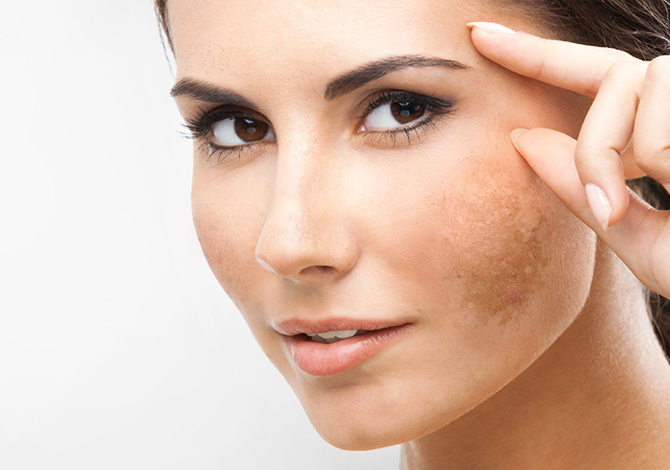Decoding the Causes of Pigmentation on Your Face

Skin pigmentation is a common dermatological issue that results in the discoloration or darkening of the skin. It occurs due to the overproduction of melanin, the pigment responsible for the color of skin, hair, and eyes. While pigmentation can appear on any part of the body, when it manifests on the face, it often becomes a significant concern due to its visibility. The condition leads to patches or spots that are darker than the surrounding skin, making them easily noticeable. It’s essential to understand the different factors contributing to facial pigmentation, as well as the types and treatments, for effective management.
Causes of Skin Pigmentation
Pigmentation on the face arises from a multitude of factors. Hormonal imbalances often result in skin changes, including darkening. Sun exposure is another primary reason, as UV radiation stimulates melanin production, leading to darker patches. Inflammation, skin injuries, and even acne can also result in post-inflammatory hyperpigmentation. External environmental factors like pollution and poor air quality can further exacerbate pigmentation. Lifestyle choices such as smoking and consuming alcohol are additional contributors. Some people may experience pigmentation due to certain medications, medical treatments like chemotherapy, or as a side effect of medical conditions like Addison’s disease. Genetic predisposition also plays a role; some families seem more prone to skin pigmentation than others. Lastly, those with darker skin tones are generally more susceptible to developing pigmentation issues.
Types of Skin Pigmentation
Facial pigmentation comes in various forms, each with unique characteristics and contributing factors:
Melasma: Commonly triggered by hormonal changes such as pregnancy or the use of birth control pills, melasma appears as large brown or gray patches. It often manifests on the cheeks, forehead, nose bridge, and upper lip.
Freckles: These are small, light brown spots that generally form due to sun exposure and are common in people with fair skin.
Solar Lentigines: Also known as “sunspots,” these are darker patches that often occur in older adults as a result of prolonged sun exposure.
Post-Inflammatory Hyperpigmentation (PIH): Occurs after a skin injury or inflammation, such as acne scars, burns, or cuts. PIH presents as dark patches or spots that are similar in shape to the injury.
Chloasma: This type occurs during pregnancy and is similar to melasma but tends to fade away after childbirth.
Non-Surgical Treatments for Pigmentation on the Face
When it comes to non-surgical treatment for pigmentation on the face, there are several options. Topical treatments include skin-lightening creams containing ingredients like hydroquinone, kojic acid, or vitamin C. Chemical peels and microdermabrasion are other popular procedures. However, one of the most advanced and effective non-surgical treatments for pigmentation on the face is Pico Laser therapy.
Delving Deeper into Pico Laser
Pico Laser stands out as a groundbreaking treatment for pigmentation on the face. The technology uses ultra-short laser pulses to break down pigment particles into smaller fragments. These fragments are then naturally eliminated by the body’s immune system, leading to lighter skin. Unlike traditional lasers, which use longer pulse durations and can risk burning the surrounding skin, Pico Laser minimizes this risk by using ultra-short pulses that offer higher precision and safety. It is effective for treating various types of pigmentation, including but not limited to melasma, freckles, and sunspots. Moreover, it is appropriate for all skin types and tones.
The procedure generally involves multiple sessions spaced a few weeks apart for optimal results. Each session lasts around 15 to 30 minutes and is minimally invasive, causing little to no discomfort. Post-treatment, some individuals may experience mild redness or swelling, but these symptoms usually disappear within a few hours or days.
Post-Treatment Care
After undergoing a Pico Laser session, maintaining your skin becomes crucial for long-lasting results. Sunscreen application is essential, as UV radiation can trigger or worsen pigmentation. Additionally, incorporating skin-care products with active ingredients like vitamin C can aid in maintaining the results.
Conclusion
Facial pigmentation is a complex issue influenced by multiple factors, ranging from hormones and sun exposure to genetics and skin type. While various types of pigmentation exist, each with its unique characteristics and needs, advancements in dermatology have led to effective non-surgical treatments for pigmentation on the face. Among these, Pico Laser therapy stands out for its efficiency, precision, and minimal side effects. Always consult a qualified dermatologist for a proper diagnosis and a personalized treatment plan to address your skin’s unique needs effectively.